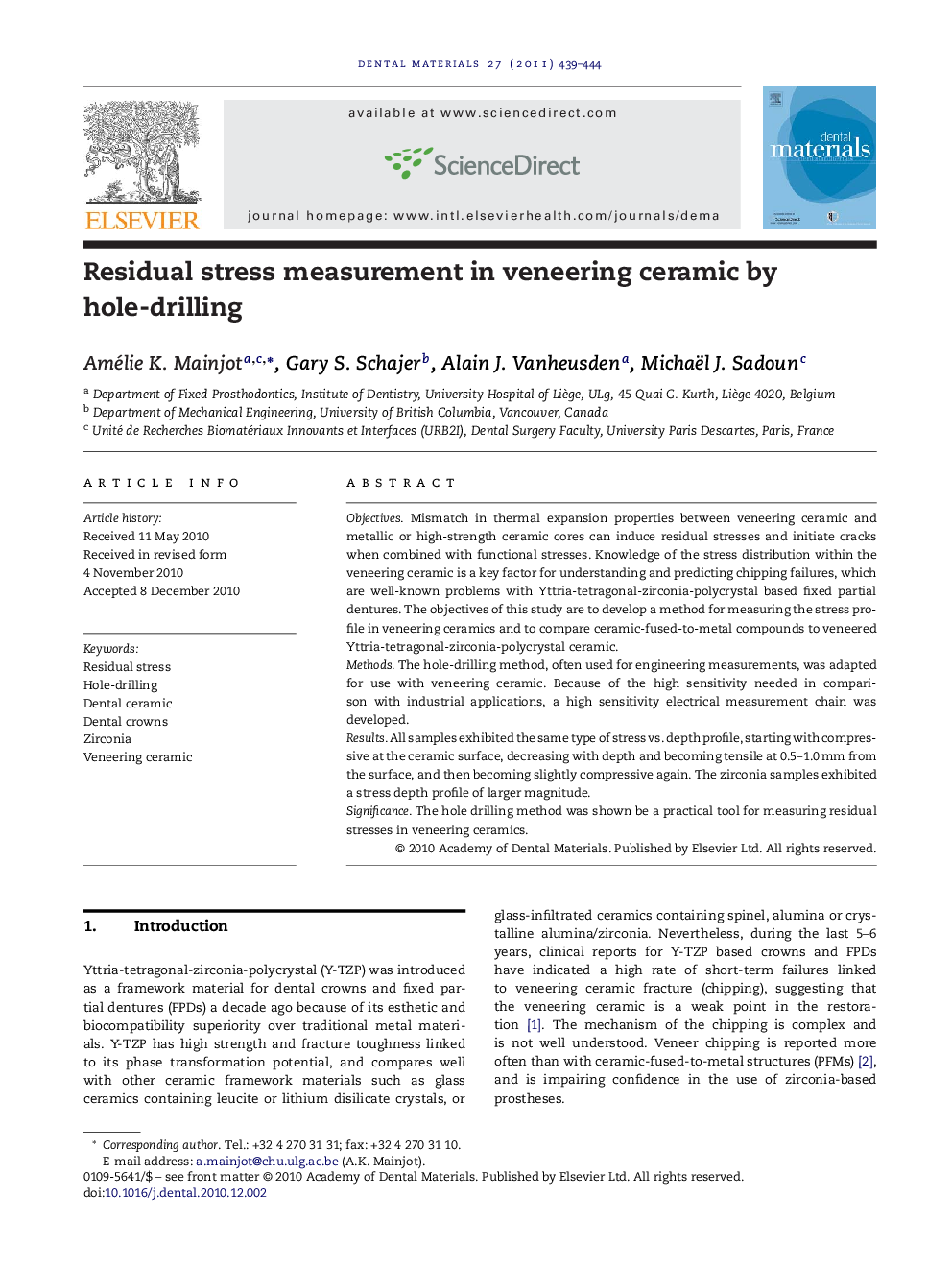| کد مقاله | کد نشریه | سال انتشار | مقاله انگلیسی | نسخه تمام متن |
|---|---|---|---|---|
| 1421870 | 986427 | 2011 | 6 صفحه PDF | دانلود رایگان |

ObjectivesMismatch in thermal expansion properties between veneering ceramic and metallic or high-strength ceramic cores can induce residual stresses and initiate cracks when combined with functional stresses. Knowledge of the stress distribution within the veneering ceramic is a key factor for understanding and predicting chipping failures, which are well-known problems with Yttria-tetragonal-zirconia-polycrystal based fixed partial dentures. The objectives of this study are to develop a method for measuring the stress profile in veneering ceramics and to compare ceramic-fused-to-metal compounds to veneered Yttria-tetragonal-zirconia-polycrystal ceramic.MethodsThe hole-drilling method, often used for engineering measurements, was adapted for use with veneering ceramic. Because of the high sensitivity needed in comparison with industrial applications, a high sensitivity electrical measurement chain was developed.ResultsAll samples exhibited the same type of stress vs. depth profile, starting with compressive at the ceramic surface, decreasing with depth and becoming tensile at 0.5–1.0 mm from the surface, and then becoming slightly compressive again. The zirconia samples exhibited a stress depth profile of larger magnitude.SignificanceThe hole drilling method was shown be a practical tool for measuring residual stresses in veneering ceramics.
Journal: Dental Materials - Volume 27, Issue 5, May 2011, Pages 439–444